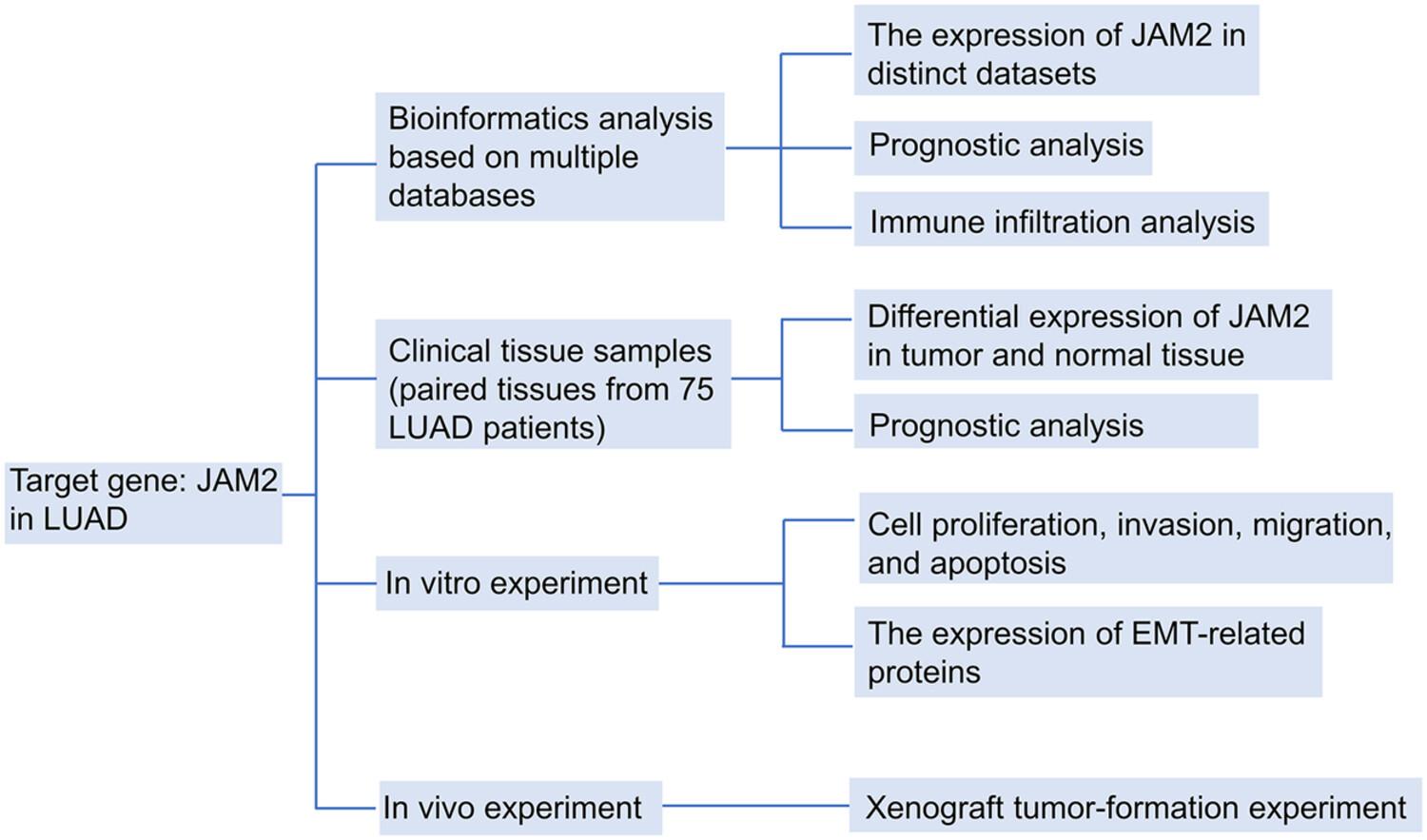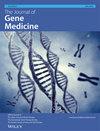Junctional adhesion molecule 2 (JAM2) plays a pivotal role in various biological processes, including proliferation, metastasis and angiogenesis, contributing to tumor progression. While previous studies have highlighted the polarizing functions of JAM2 in different cancer types, its specific role in lung adenocarcinoma (LUAD) remains unclear.
In this study, we harnessed multiple public databases to analyze the expression and prognostic significance of JAM2 in LUAD. Using the Linkedomics database, Matescape database and R package, we explored the associated genes, the potential biological functions and the impact of JAM2 on the tumor microenvironment. Our findings from public databases were further validated using real-time quantitative PCR, western blot and immunohistochemistry. Additionally, in vitro experiments were conducted to assess the influence of JAM2 on LUAD cell proliferation, invasion, migration, apoptosis and epithelial–mesenchymal transition. Furthermore, we established a xenograft model to investigate the in vivo effects of JAM2 on tumorigenesis.
Our results revealed a significant downregulation of JAM2 in LUAD, and patients with low JAM2 expression exhibited unfavorable overall survival outcomes. Functional enrichment analysis indicated that JAM2 may be associated with processes such as cell adhesion, extracellular matrix, cell junctions and regulation of proliferation. Notably, increased JAM2 expression correlated with higher tumor microenvironment scores and reduced immune cell abundance. Furthermore, overexpression of JAM2 induced apoptosis, suppressed tumor proliferation and exhibited potential inhibitory effects on tumor invasion and migration through the modulation of epithelial–mesenchymal transition. Additionally, in vivo experiments confirmed that JAM2 overexpression led to a reduction in tumor growth.
Overall, our study highlights the clinical significance of low JAM2 expression as a predictor of poor prognosis in LUAD patients. Moreover, JAM2 was found to exert inhibitory effects on various aspects of tumor progression. Consequently, JAM2 emerges as a promising prognostic biomarker and a potential therapeutic target for LUAD patients.



